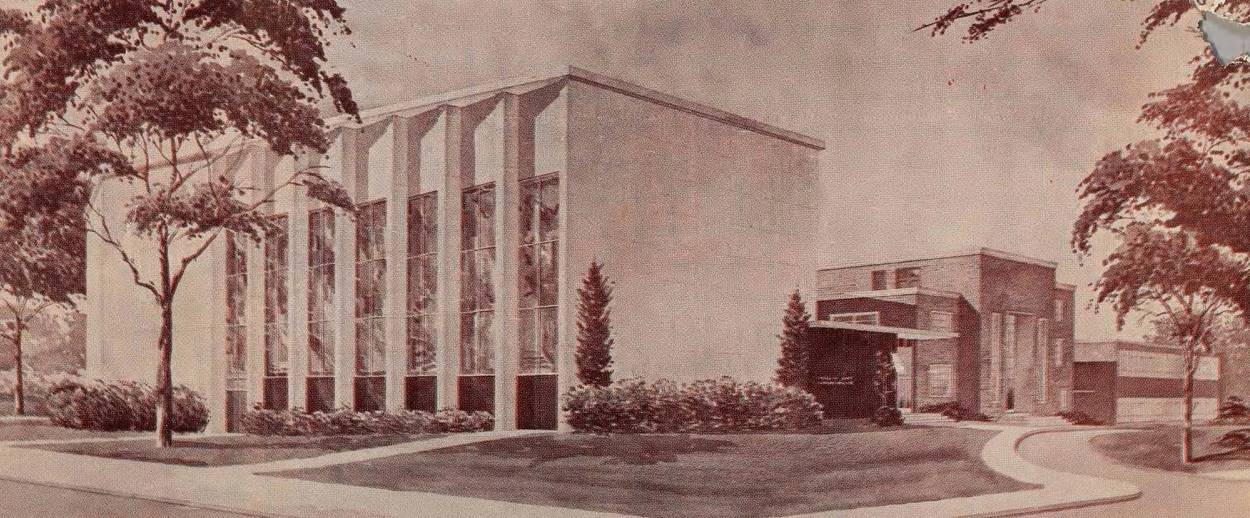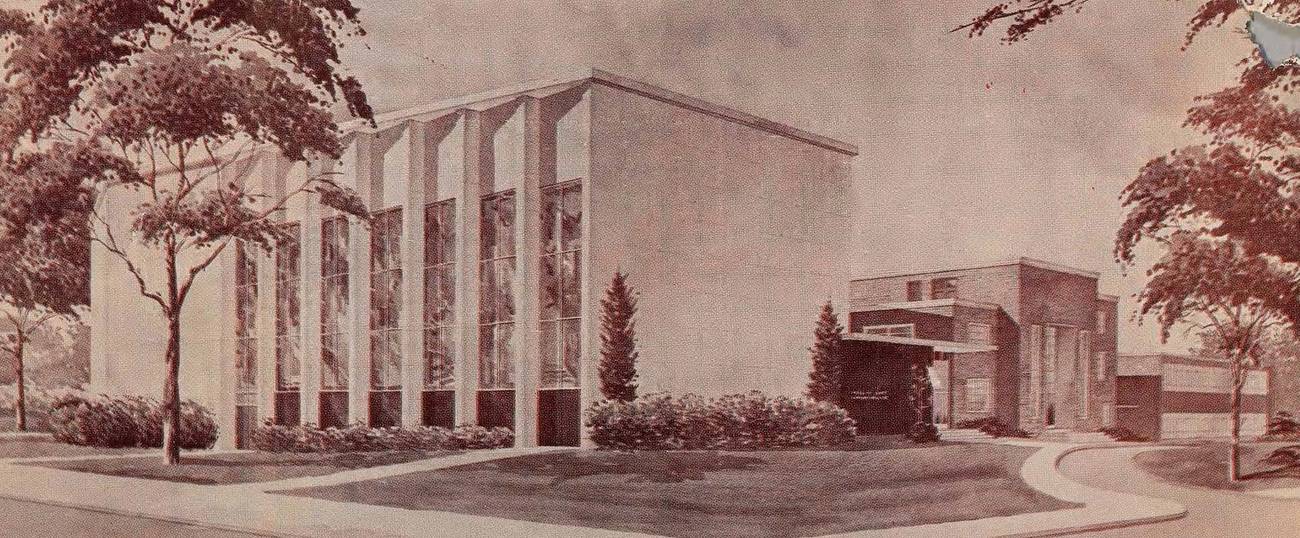When the Destruction of the Temple Isn’t an Abstract Historical Event
On the first Tisha B’Av after the Pittsburgh massacre, understanding the horror of destruction—and the possibility of renewed joy




Last year, it was hard to get into the mood for Tisha B’Av. It fell during the only week of the summer that all three of my kids were home in Pittsburgh and we had a little staycation: Segway tour around our town, visit to Picklesburgh, canoeing in Lake Moraine State Park, and, on the afternoon of Tisha B’Av, driving up to Chautauqua, New York, for two days. That evening, I chanted from the first chapter of the book of Lamentations—whose Hebrew name, Eicha, means literally “how,” as in “how is this possible”—at Tree of Life synagogue in Squirrel Hill.
This year, no one will be using the Tree of Life building, not even for the High Holidays. Instead they will be meeting at Calvary Church and we will welcome 5780 at Beth Shalom, where I will also be reading from the first chapter of Eicha again, the rabbi’s secretary recently informed me in an email. She is a heroine; on Oct. 27, 2018, she was able to hide herself and others, though one of those she courageously escorted to safety ran out, lacking the understanding that he was running toward a shooter.
This year, we are going to Chautauqua as a family because my husband—the rabbi at New Light Congregation, which used to meet at Tree of Life—has been invited to speak to the Hebrew Congregation there about his own experiences in the basement of the Tree of Life building on Oct. 27. It won’t be such a vacation this year, when he has to spend part of it discussing things he truly does not relish examining.
Tisha B’Av is the day that telescopes many of the main catastrophes of Jewish history in its entirety into one day, this year observed beginning Saturday night Aug. 10, though the day of the Sabbath is the actual calendar date. The events ascribed to the day have to do with separation between God and Israel, both spiritual and physical; the five events connected with the ninth of Av and the 17th of Tammuz, three weeks prior, are discussed in the Mishna Taanit 4:6.
I’ve never found the day hard to observe since I first learned about it at age 10 at Camp Ramah in the Poconos, but don’t know how I will feel this year. For those who have trouble with understanding the holiday, this explanation by Rabbi Joseph Soloveitchik, the core teacher of modern Orthodoxy even 26 years after his 1993 death, should suffice: “We observe this saddest day of the year because we cannot understand why our people continues to suffer so much tragedy.” I definitely don’t understand how 11 devoted people could be killed as Jews in America in 2018. Since Oct. 27, the place where we celebrated the bris of a congregant’s grandson became the place of the grandfather’s death; the same man who was the mohel at that joyous occasion then served on the chevra kadisha. The whole synagogue building has lain empty, a vacant shell, ghost structure standing as a vivid reminder of what is no more: 11 Jews killed only for the crime of worshipping as Jews on the Sabbath.
No longer an abstraction, these dirges for what is lost; now they encapsulate part of my reality. The reality that we can’t use the place where we had gathered in happy times—for a Purim megillah reading, play, and meal, a Sukkot dinner, a concert of Magavet, the Yale University Jewish singing group—is now a place of death and destruction whose name and photo are known internationally. The social hall where I have attended bar and bat mitzvahs and weddings, the same hall where I danced, became the area that Zaka and the chevra kadisha performed their sacred and tragic duties, and people l knew from other contexts, like my daughter’s SAT math tutor, were now in full-body protective wear and hairnets so that the bodily fluids they were cleaning up would not transfer to their own living bodies.
The topic of Oct. 27 comes up pretty much every day, in pretty much every context, a constant circling back to the violence our community has experienced. For instance, on July 4 we went downtown to view fireworks, sitting with our physician friend Jane, and told her we usually go to fireworks at the home of my mother-in-law’s friend Lew, a retired pathologist. Does Jane know Lew? No, she does not, but her next-door neighbors on either side are both pathologists. In fact, one is a pathologist for the city of Pittsburgh, who examined all of those killed at Tree of Life. That was not an image I particularly wanted in my head as I readied myself to watch explosions of colored light in the sky on a summer evening.
And yet, I will read this verse from Lamentations on Saturday night: “the comforter who should restore my soul is far from me, my children are desolate because the enemy has prevailed.” (1:16) I have never felt more that there are so many to comfort me, my family, my community and that evil has not prevailed though it has done great damage. There are odd signs that give me and others comfort. One of those killed was a twin; his sister worried how she would manage without him on their birthday. When is that day? The same day as my own birthday. I promised her I would do something with her to celebrate, which we did. Congregants are stepping up to learn the synagogue skills possessed by those three of our congregants no longer with us. Looking up the Hebrew birthday for a woman who never had a bat mitzvah as a girl, we found the Torah portion for her birthday was the same as one of those who were killed. She will be reading that Haftarah in 2020 as well as in years to come.
Though it is not hard to get in mood for Tisha B’Av this year, since I feel like I have been enduring that feeling since Oct. 27, I also remember that even though the Temple was destroyed so many years ago, and was an unmitigated catastrophe, the expulsion of Jews from the land created the necessity to find new forms and ways to continue the religion.
“The nature of trauma,” Bessel van der Kolk a psychiatrist and expert in post-traumatic stress, has said, “is that you have no recollection of it as a story. The nature of traumatic experience is that the brain doesn’t allow a story to be created.” I read this in Dani Shapiro’s book Inheritance, about her struggle to find continuity in her life when she learns her biological father is not the man who raised her. The inability to create a story reminds me of the passage in the Babylonian Talmud Makkot 24b that Rabbi Amy Bardack taught as part of her class on “Jewish Texts of Resilience” at our community Shavuot Tikkun. Four rabbis are walking in the destroyed Jerusalem, on Mount Scopus and then the Temple Mount. One of them, Rabbi Akiva, laughs to see foxes scurrying over the Temple Mount (in Hebrew har habayit, literally the “mountain of home”) while the others are despondent. His colleagues interrogate him—how can you laugh when this place, once an abode of fear and trembling before God, is now so profaned that animals trample it? Rabbi Akiva explains to them about that the prophecies of Uriah during the First Temple and of Zechariah during the Second Temple, that the one, “Zion shall be plowed for a field” (Micah 3:12) is dependent on the other, “there shall yet be elderly men and elderly women in the streets of Jerusalem” (Zechariah 8:4). Destruction must transpire for redemption to happen. Akiva has created a way to tell the story; his laughter and its explanation stop the trauma, for the others tell him he has comforted them.
In continuing with that theme, there is a teaching that the Messiah will be born on the afternoon of Tisha B’Av, allowing for the possibility that even in tragedy there is hope and possibility.
My own personal version of transforming tragedy into renewed vigor to have laughter and joy came two weeks ago when I had a visit from a woman I met on the sherut (shared taxi) I took two months ago when I left Jerusalem, where I had been celebrating Passover, to return to the airport en route to Pittsburgh. The sherut driver only takes cash and at the end of my trip, I had none. So I had to ask the other passengers to spot me the money for a check or Venmo (if my kids assisted that interaction). Another passenger agreed, and we chatted. She told me she, too, was from Pittsburgh originally and would be here later in the summer. We exchanged emails, and I gave her my check. I hadn’t expected to hear from her further; however, when she was visiting in July, she emailed me and we set a date to have coffee. She told me the address of her childhood house: It was literally on the same block as mine, around the corner. I heard more of her story—a man followed her father home 25 years ago and broke in to murder him. Her mother had been terminally ill and died a few weeks later, as did her grandmother. But now, she told me, every birthday, every milestone, every moment with the grandchildren she moved to Israel to be near, brings her intense joy. The tragedies she suffered magnify her need to wring every bit of joy from each occasion, her pleasure highlighted by the knowledge that horror, too, may be around the corner.
I have a heightened grasp of the holiday of destruction this year. Yet, I also have a heightened awareness: Once ceased, joy may after all be renewed and restored.
Beth Kissileff is the editor of the anthology Reading Genesis (Continuum, 2016) and the author of the novelQuestioning Return (Mandel Vilar Press, 2016). Visit her online at www.bethkissileff.com.